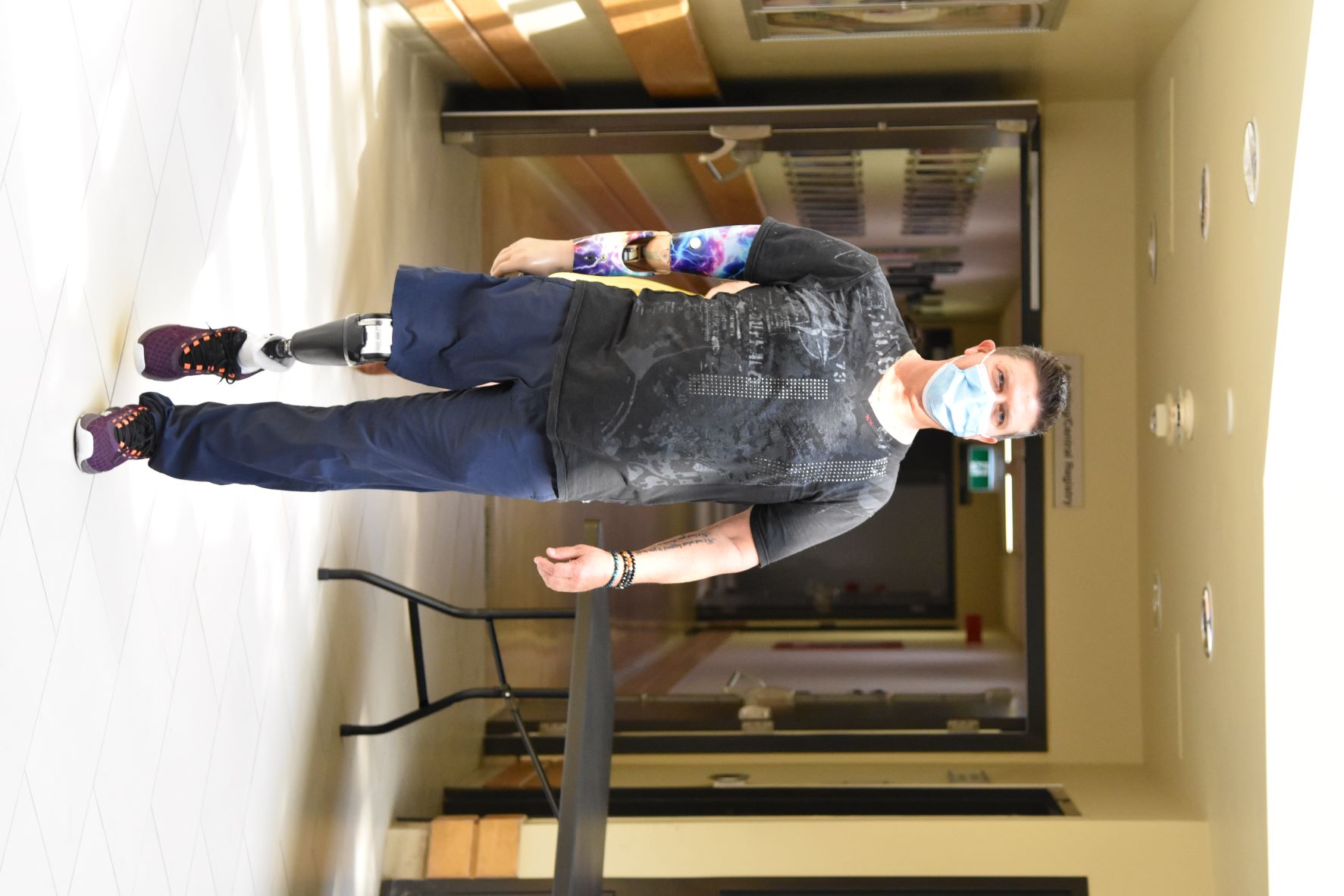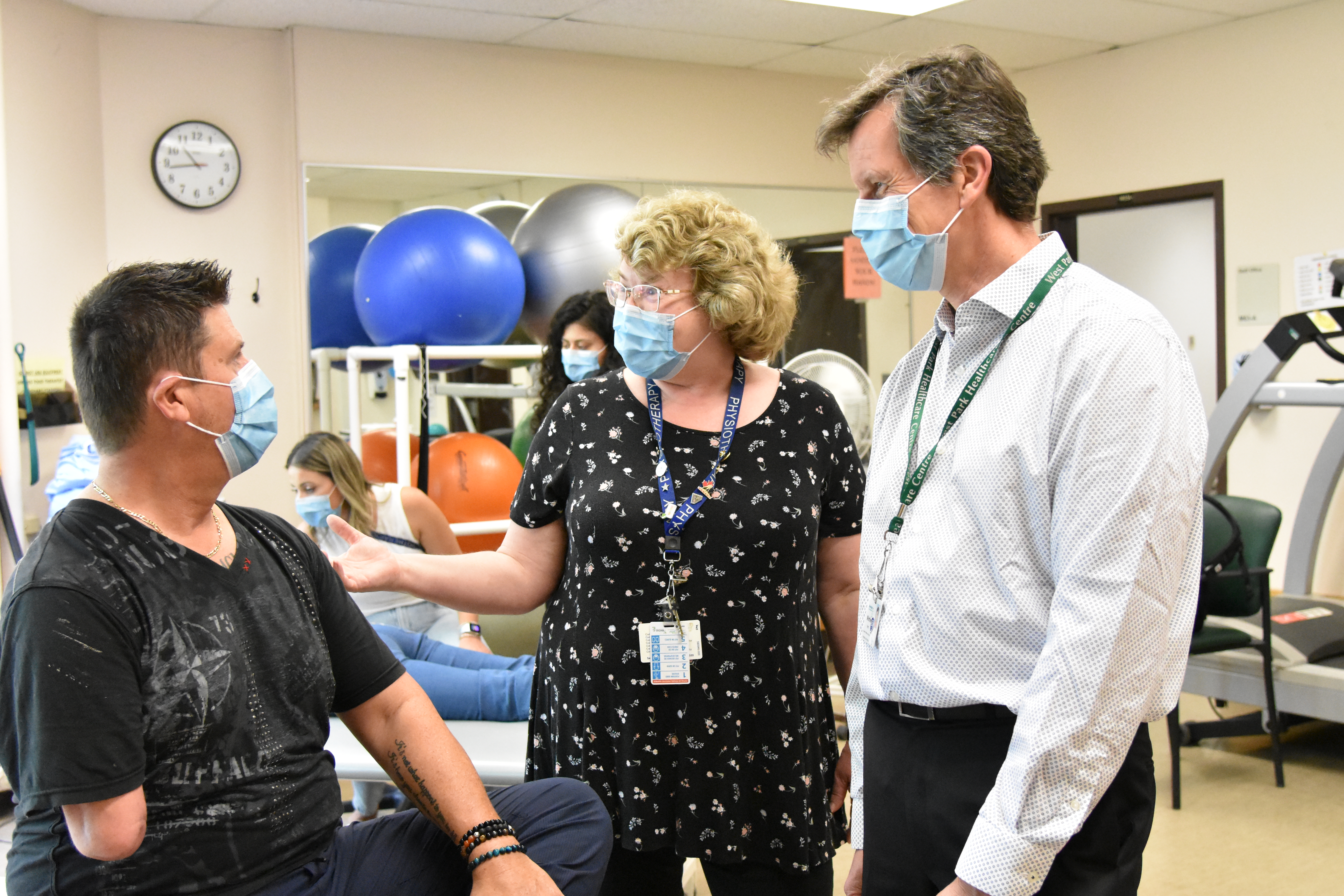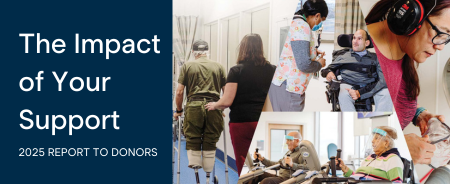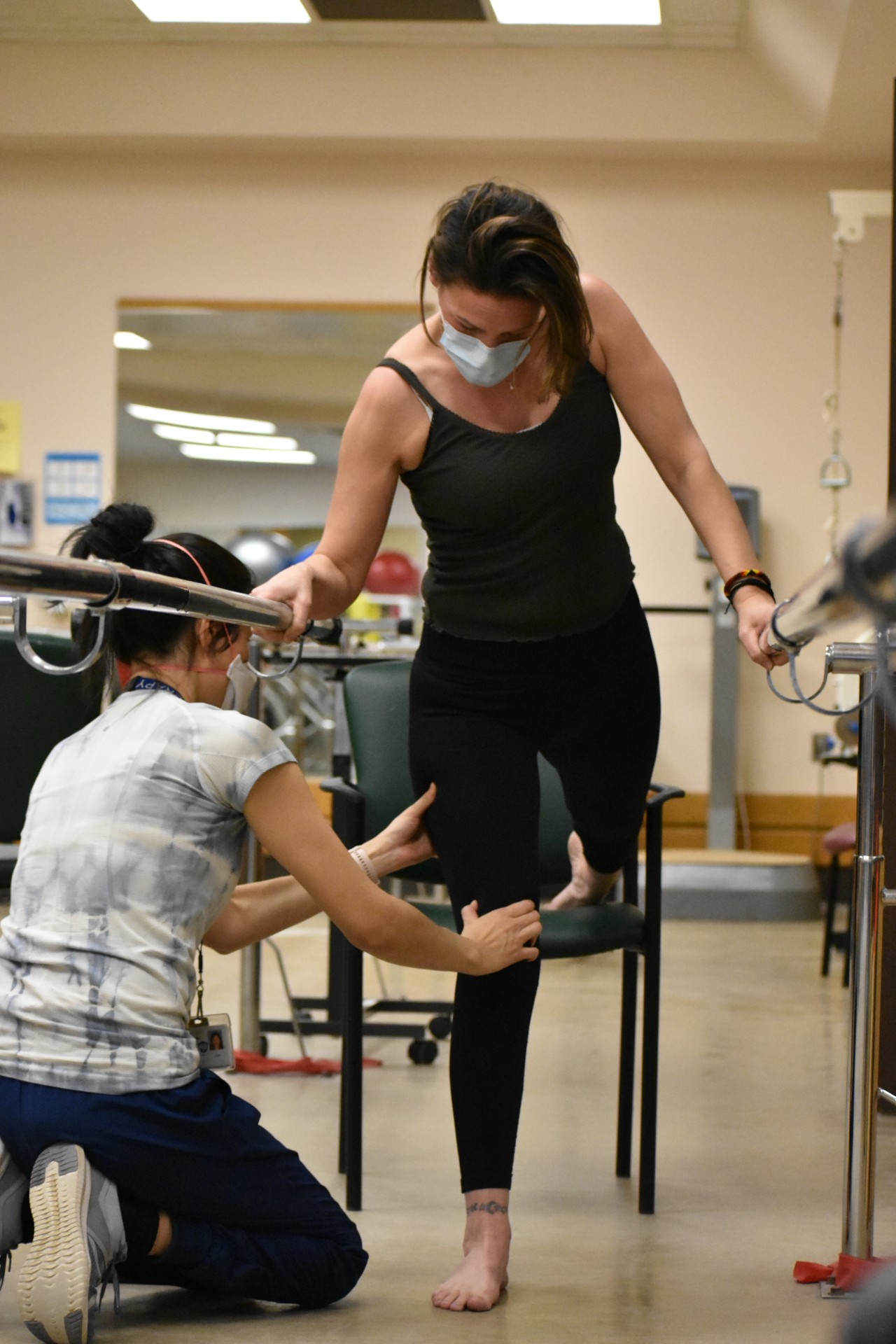
Spotlight: John Cairns
Innovative Procedure Changes the Life of John Cairns
It’s a warm sunny summer morning at West Park and amputee patient John Cairns is undergoing an outpatient physiotherapy session. John’s joking and chatting with his physiotherapist, Janet Campbell, other staff members and patients throughout the room.
But it isn’t just John’s outgoing demeanor that makes him stand out. When he removes his prosthetic leg, a metal bar can be seen sticking directly out from his leg,just below his hip.
John recently underwent a surgical procedure known as osseointegration. In this revolutionary procedure, a metal implant is inserted into the bone of a residual limb, which then attaches directly to a prosthesis. Osseointegration has been used for decades in dental implants and joint replacements, but its use with prosthetics is more recent. 
John has been a double amputee, using standard prosthetics for more than 30 years, after a train accident cost him his right arm and leg. Despite the many advantages of wearing a prosthetic, prostheses can still be uncomfortable for the wearer; with residual pain, irritation and other skin issues, general fatigue, nerve pain, discomfort with the socket, and back pain among the discomforts amputees may face.
John never let these challenges get in the way of living a full life. He climbed Mount Kilimanjaro, Mount Everest Base Camp, rode the Highway of Heroes Bike Ride and swam the Bay of Quinte, all while running a successful real estate business. He was also named an Honorary Colonel of the Canadian Air Force and is a recipient of Canada’s Walk of Fame UnSung Hero Award.
John had been coming to West Park for over 15 years. The home of the largest amputee rehabilitation service in Canada and a global leader in research in improving care for amputees, John speaks glowingly of the service and care he’s received at West Park.
“West Park is a hospital, but it’s the people who make the difference. It’s not only the mechanics of rehab, but a team of people who believed in me. They’re Canada’s unsung heroes.”
In 2018, John’s West Park prosthetist, Winfried Heim, suggested him as a candidate for osseointegration, in which an artificial implant is surgically anchored and integrated into bone, which then grows into the implant. “John had a lot of trouble with socket fit, skin chafing etc. especially because he has always been very active and his residual limb was not easy to fit,” Heim says, about why he felt John would benefit from osseointegration

Over the next few years, John had a number of evaluations to ensure he was a suitable candidate and that the surgery would be beneficial for him.
In October 2022, he underwent the procedure at Montreal General Hospital, and spent three months in post-acute care. He returned to West Park in March 2023 for regular outpatient appointments, and has already made leaps and bounds in progress.
Once or twice a month he visits West Park, and keeps up a regular at-home exercise regime to help him adjust to his new leg. The process isn’t easy, but it’s worth it; John says he’s “using muscles I haven’t used in 30 years. They’re there, I just have to wake them up.”
With his new prosthesis, John is able to feel the reverberations from the ground as he walks, in the same way that someone who has not had a leg amputation would. He has much better control of his prosthesis, and the prosthesis has a direct connection to his leg muscles. And because there is no socket – the device that joins a residual limb to a prosthetic – John doesn’t experience the chafing and irritation he did before the surgery.
He still has some ways to go, but the difference the osseointegration has made in his life has already – not even a year out from the procedure – been outstanding.
“If I did a 2-5k walk, I didn’t walk again for three days. But now, I’ll do that today and I’ll do that tomorrow. If I worked all day and a friend called to go see a movie, I’d say ‘I can’t.’ Now I can.” John says. “It used to be that when I woke up, the last thing I would do is put on the prosthesis. Today, it’s the first thing I put on.”
This story originally appeared in the Fall 2023 edition of the Giving Lives Back Newsletter. You can read the edition here.



